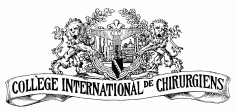The International College Of Surgeons is a nongovernmental organization in official relations with the World Health Organization (WHO). In that capacity, we have received and make available WHO’s latest release concerning COVID 19. Any questions concerning the information should be directed to WHO.
UPDATED: March 10, 2020
[embeddoc url=”https://icsglobal.org/wp-content/uploads/Update-15_EPI-WIN_COVID19.pdf” download=”all”]